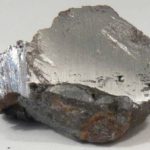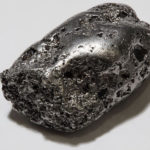Interesting facts about silver
 Silver – metal is much more common than gold, and much cheaper. Nevertheless, it has also been valued from time immemorial for its qualities, and, like its more noble brother, silver has been used for financial security for centuries. In our time, silver is actively used not only in jewelry, but also in industry.
Silver – metal is much more common than gold, and much cheaper. Nevertheless, it has also been valued from time immemorial for its qualities, and, like its more noble brother, silver has been used for financial security for centuries. In our time, silver is actively used not only in jewelry, but also in industry.
People began to use silver even before the onset of our era – in Sardinia, for example, it was mined and processed from the early Eneolithic era. This became possible due to the fact that previously the noble metal was often found in the form of nuggets, and it did not have to be smelted from other ores. Gold, however, also occurs in the form of nuggets, but less often.
In ancient times the Babylonians and Assyrians considered silver to be the symbol of the Moon and revered it as a sacred metal.
In the Middle Ages, silver won great popularity among alchemists. Then this metal was widely used for the production of plates, kitchen utensils, cutlery and coinage.
In the middle of the XV century in the Ore Mountains was found a silver nugget weighing 20 tons. Similar large finds have occurred in other parts of the world. For example, at the Canadian mine Cobalt managed to find a plate called “silver sidewalk” – its length was about 30 meters.
Silver has almost one hundred percent coefficient of light reflection.
At room temperature, silver conducts electricity better than any other metal known to mankind.
Due to their high photosensitivity, silver compounds are used in photography.
Man-made weather changes, or “dispersal of clouds,” became possible due to the use of silver iodide sprayed from aircraft.
Silver is often used as an antibacterial agent – primarily for the disinfection of water.
Silver is an officially recognized food additive – it is designated as E174.
Colloidal silver since the 1990s has often been used in folk medicine, although scientists have not come to a final conclusion regarding its relative properties.
A small amount of silver (about 0.02 milligrams per kilogram of weight) is contained in the bodies of all mammals. Its biological role has not been sufficiently studied yet, but it is known that in the human body, most of the silver is contained in the neurons of the brain.
With food, a person receives about 0.1 mg of silver daily. Particularly rich in its compounds is the egg yolk.
In ancient Egypt, wounds were applied to the silver plates to protect the patient from suppuration and to speed up the healing of tissues.
Despite all its useful properties, silver, like any heavy metal, has a toxic effect on the body with excessive concentration. For example, silver ions are capable of destroying DNA molecules and damaging genes in spermatozoa.
In Russia, silver was first smelted only at the end of the XVII century.
Myths and legends of many nations of the world donate silver with mystical properties – metal is supposedly capable of scaring away vampires, evil spirits and other evil spirits.
The name of another valuable metal, platinum, is translated from Spanish as “small silver”.
The word “silver” is translated from most languages of the world as “light” or “white”.
In Japan, silver is used in the manufacture of air conditioners – these devices not only refresh, but also purify the air in the room.



























